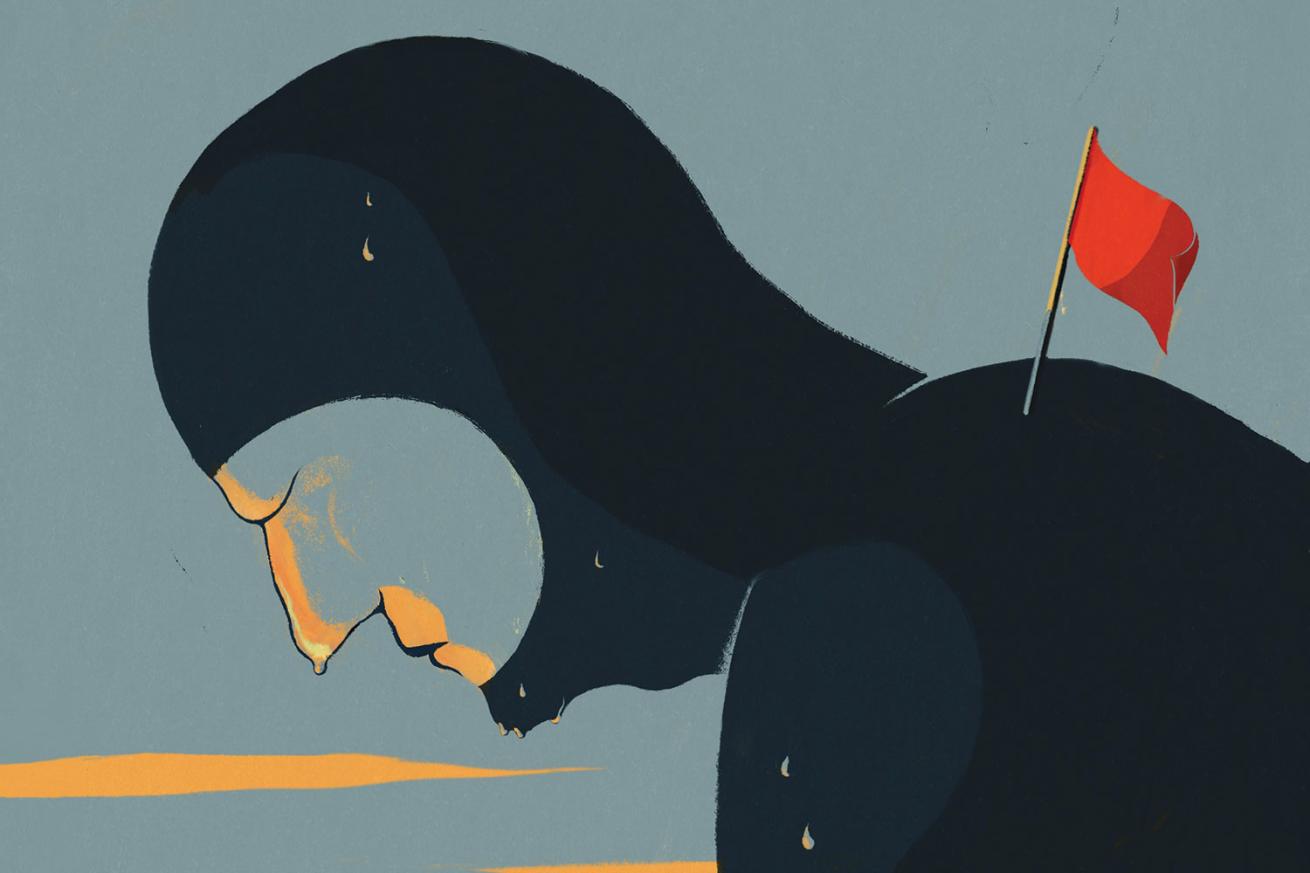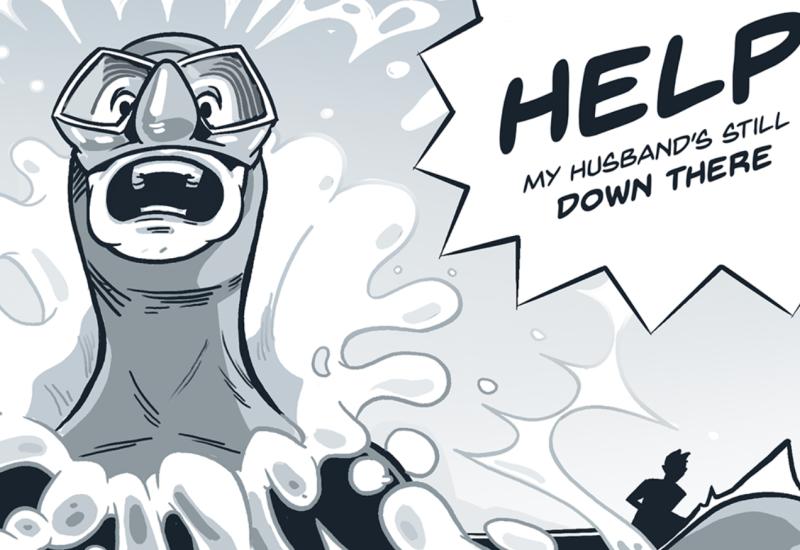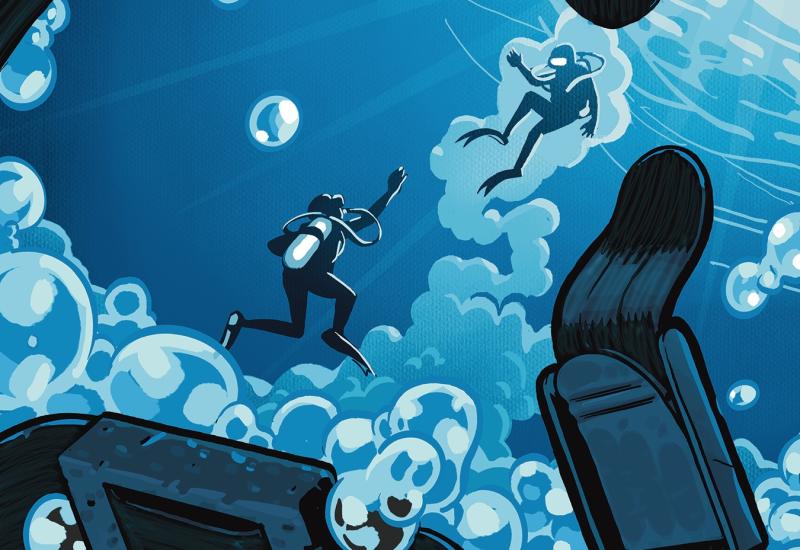When Renting Scuba Gear Goes Wrong

Carlo GiambarresiScuba diving safety tips for identifying decompression illness, DCI, and using rental gear on vacation.
Anthony and his wife opted to travel light on vacation — because of baggage-weight restrictions, he left his dive gear at home. When he had a chance to make a couple of dives, he borrowed gear from a local shop. He knew he was experienced enough to handle using unfamiliar gear, so that wasn’t a problem.
During the dive, Anthony noticed his low-pressure inflator kept sticking, filling his BC with air. When it came time to return to the surface from nearly 100 feet, he felt himself ascending much faster than he should be.
THE DIVER
At 63 years old, Anthony had been diving for more than 30 years. He was an avid diver and an instructor who didn’t take any medications. He had logged more than 2,000 dives.
THE DIVE
Anthony was diving with his wife from a charter dive boat operated by a dive shop near where they were staying. For their first dive of the trip, he made a dive to 97 feet for 20 minutes. Throughout the dive, he struggled with his buoyancy control as his low-pressure inflator continuously added air to his BC. He constantly floated upward, and then vented it right back out to stay on the bottom. His wife experienced no problems on the dive.
THE ACCIDENT
As Anthony and his wife ended their dive, Anthony struggled to ascend at a safe rate. He continuously vented his BC as he surfaced but ended up setting off the rapid-ascent-rate alarm on his dive computer in the last 30 feet. He finally got his ascent under control just before he reached the surface. Other than triggering the alarm, he did not have any problems on the dive and did not omit any mandatory decompression. He did not, however, make a safety stop.
Considering the gear problems, Anthony decided not to make a second dive that day. Two hours later, he noticed his right shoulder hurt. On a scale of one to 10, with 10 being the worst, he rated it a six. Like a lot of vacationers, he had other things to do and wasn’t convinced the shoulder pain was dive-related. He waited 48 hours to see if the pain would resolve on its own.
“There are two big lessons from this incident: Don’t use faulty equipment, and don’t delay treatment if you suspect you have a problem.”
When the pain didn’t go away, Anthony contacted a diving physician near where he was staying. He was diagnosed with pain-only DCI and was treated with a U.S. Navy Treatment Table 6. Following that treatment, the pain in his shoulder reduced to a four out of 10. The chamber gave Anthony two more treatments, each one giving him additional relief, but not completely eliminating his symptoms. He estimated he was at 80 percent of normal function. The physician told him to wait 72 hours before flying home, which he did.
Anthony noticed the pain in his shoulder got slightly worse on the flight back to the United States, so he contacted a physician experienced in diving medicine when he got home. He received a fourth U.S. Navy Treatment Table 6, which resolved most of the remaining symptoms. All his residual symptoms resolved after a month. Anthony returned to diving, and two years later reported no further problems.
ANALYSIS
There are two big lessons from this incident: Don’t use faulty equipment, and don’t delay treatment if you suspect you have a problem.
When Anthony realized there was a problem with his BC, he should have returned to the dive boat and gotten another BC or called the dive. His self-confidence caused him to continue the dive even though he struggled with his equipment throughout, and even though it caused him to make a rapid ascent to the surface after his body had a significant nitrogen-gas load. If he had called the first dive, he might have been able to make more dives later in the week, rather than making a series of expensive hyperbaric-chamber dives.
Lessons for Life
■ Understand the signs and symptoms of DCI, and seek treatment immediately if you suspect you might have a dive injury.
■ Get training in diving emergency management, and learn when and how to administer oxygen first aid when you suspect a dive accident.
■ Don’t attempt to use faulty dive gear. If your gear isn’t working correctly, call the dive and get it fixed, or try again later.
Diving scientists understand the basic mechanism of decompression illness (DCI), but there is a lot about DCI that they still are trying to understand, such as why a diver with hundreds of dives under his belt can develop symptoms from a single dive when another diver might do dozens of similar dives without a problem. There are many contributing factors, such as dive depth, ascent rates, bottom times and the performance of a safety stop, along with hydration and others.
Likely the biggest contributing factor in this case was the rapid ascent caused by the malfunctioning BC. The part of the dive with the greatest degree of pressure change is the last atmosphere/33 feet to the surface. As a diver, the pressure on your body is cut in half, going from two atmospheres ambient to one. Since that was the part of the dive where Anthony experienced his rapid ascent, he should have been immediately suspicious of the shoulder pain that he experienced two hours later.
For any diver, a recent history of diving, along with the sudden onset of otherwise unexplainable pain, should be an immediate red flag that the problem is dive-related. This is true even when there isn’t an obvious problem during a dive. In Anthony’s case, the rapid ascent and struggle to maintain buoyancy control during the dive should have made it obvious to him that the pain in his shoulder was likely related to his diving.
If Anthony had sought treatment sooner, instead of waiting 48 hours after he realized he was in pain, he would have had greater success with symptom resolution. In other words, if he had gone to the doctor sooner, the problem might not have been as difficult to treat.
A diving injury is very similar to any other sport injury. There is an insult to body tissues, in this case caused by the formation of nitrogen bubbles. Treatment in the hyperbaric chamber serves two purposes. When used soon after the dive, it helps return those nitrogen bubbles back to solution and allows the body to remove the excess nitrogen normally. The second purpose is to introduce high concentrations of oxygen into the body tissues to speed healing. By 48 hours or more post-dive, Anthony’s body likely had already reabsorbed the offending nitrogen bubbles, and the damage they caused was done. That made the job of the hyperbaric treatments much harder.
Again, as with any sports-related injury, medical treatment can do only so much; the body must have sufficient time to heal on its own. That explains why, after the fourth treatment, Anthony’s doctors chose not to continue treating him and why it took another month for his body to heal completely.
Anthony was a dive instructor and had probably experienced many more-challenging dives, or days with multiple dives working with students combined with dozens of ascents while students practiced emergency skills. None of that made him immune to DCI, but it might have made him less likely to ask for help when symptoms presented themselves. Denial is a big problem with treatment for dive accidents. Divers ignore possible symptoms for any number of reasons, from possible expense to embarrassment to not wanting to miss out on their vacation, but that delay only makes things worse.










